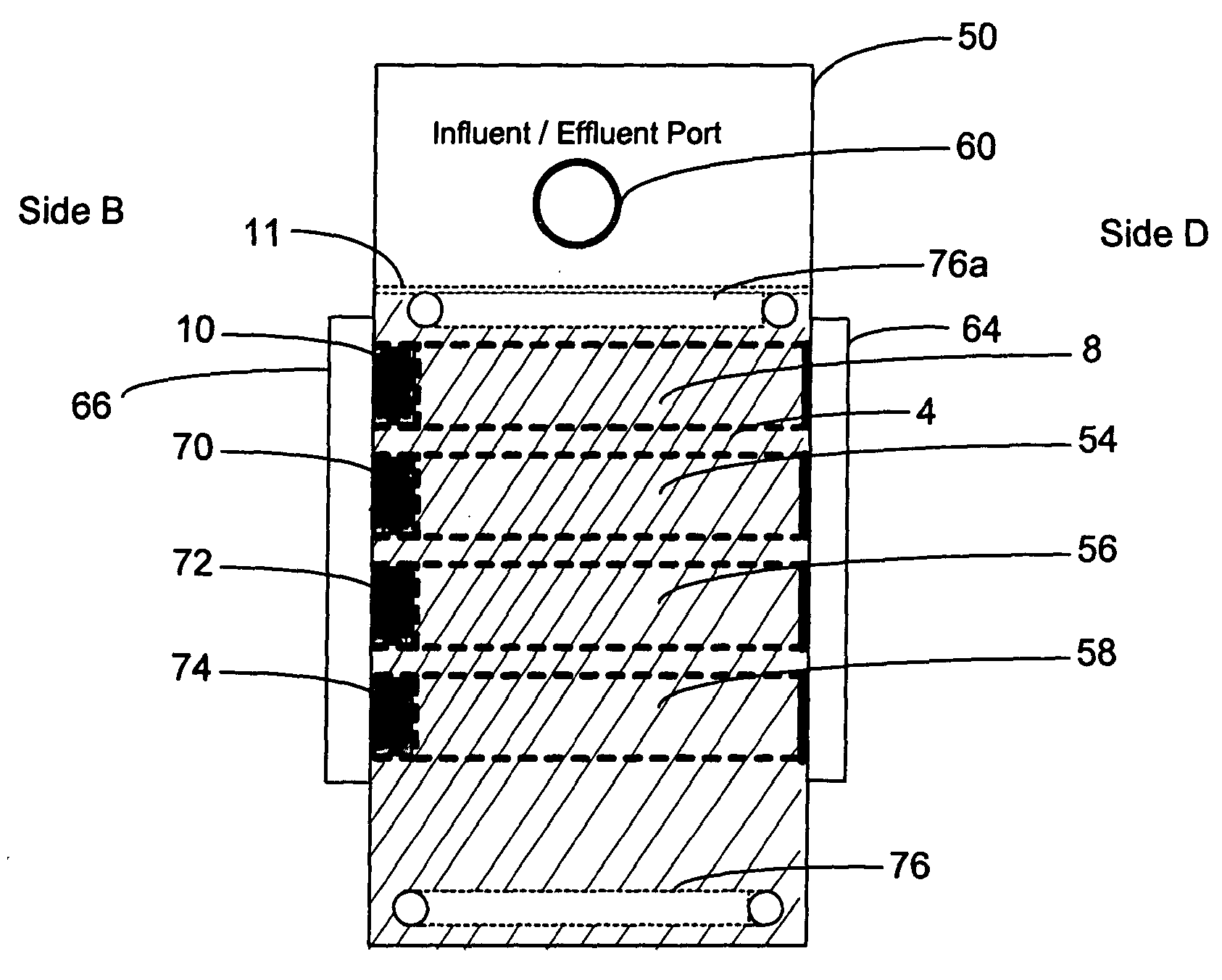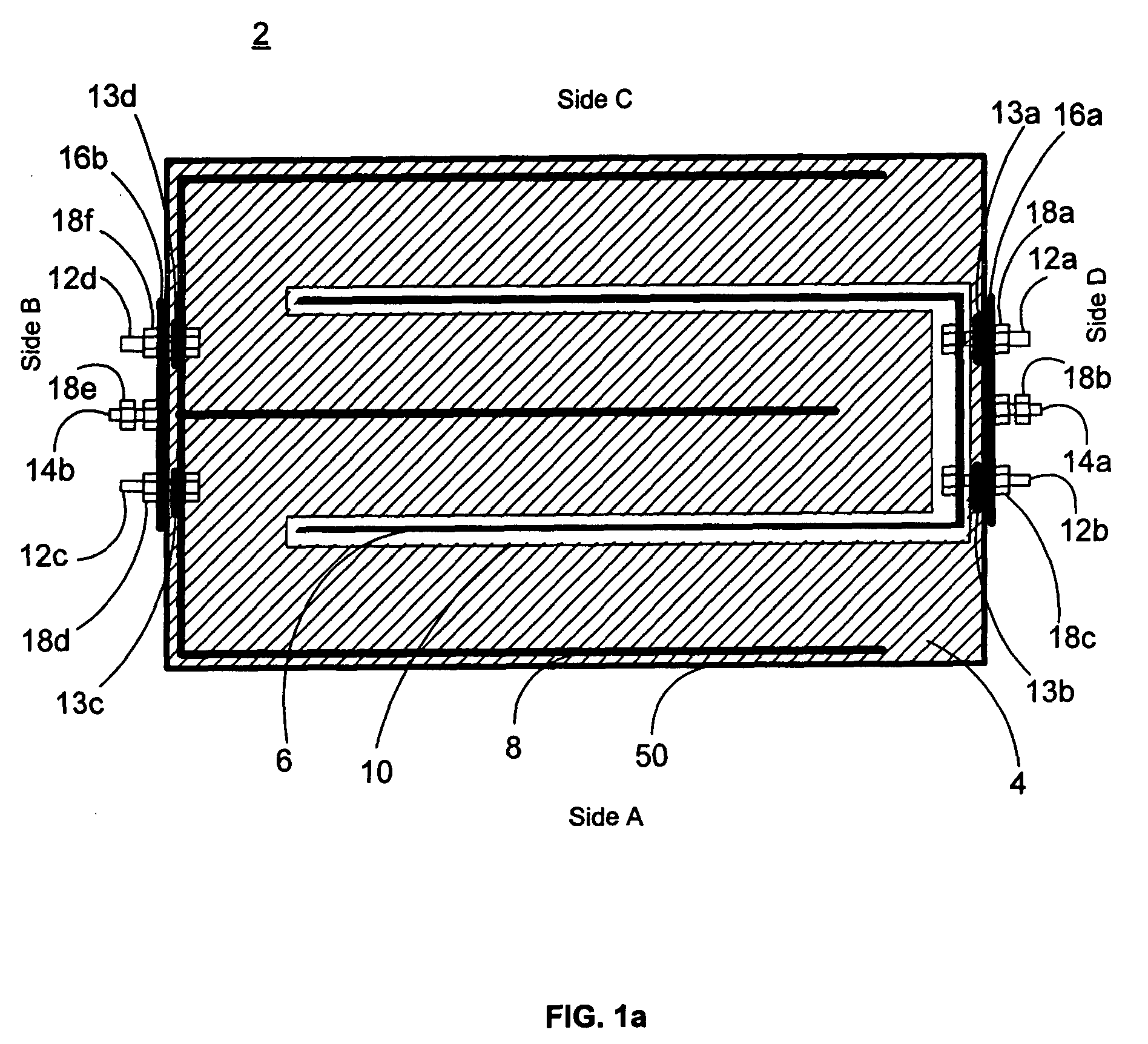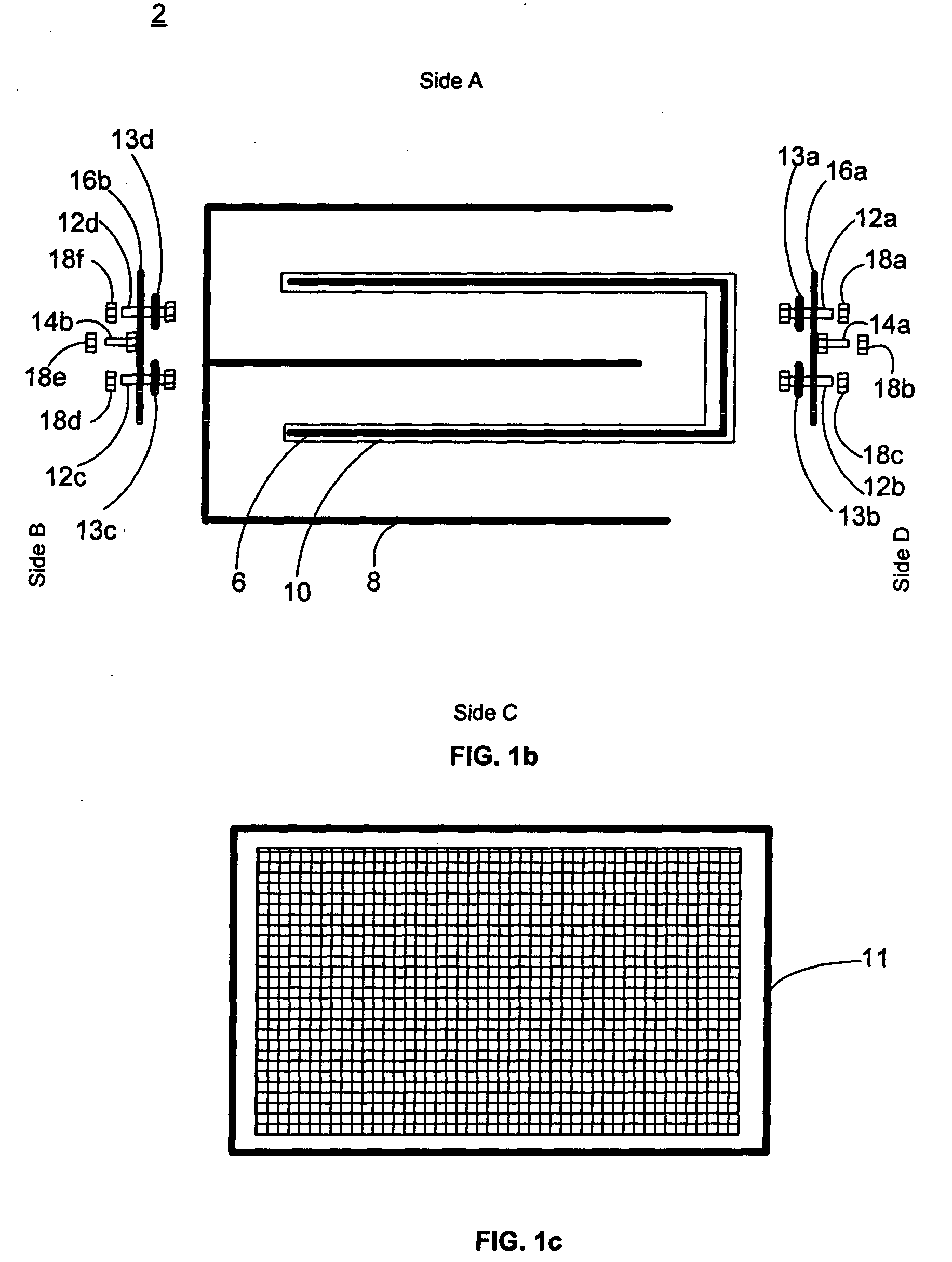Electrolytic cell stack with porous surface active electrode for removal of organic contaminants from water and method to purify contaminated water
a technology of active electrodes and electrolytic cells, applied in the field of stacks of electrolytic oxidation reduction cells, can solve problems such as oxidizing organic contaminants
- Summary
- Abstract
- Description
- Claims
- Application Information
AI Technical Summary
Benefits of technology
Problems solved by technology
Method used
Image
Examples
example 1
Remediation of Phenol Contaminated Industrial Wastewater Using Four Electrolytic Cell in One Vessel
A sample of industrial wastewater containing 1400 ppm of phenol was initially filtered through 1.0 Micron filter and then introduced in to recirculation tank at a rate of 2.0 gpm. A flow of 20 gpm was taken from circulation tank containing 50 gals of water and introduced into a four electrolytic cell vessel as shown in FIG. 4. All four cells were connected in series arrangement. A 30 amp AC electrical current was applied at 30 volts (power consumption of 900 watts). A 2.0 gpm flow was discharged from the effluent of the electrolytic cell and the 18 gpm balance were returned to the recirculation tank. The experiment was conducted for 75 minutes and 150 gals of wastewater were treated.
TABLE IDETECTIONSAMPLELIMITRESULTSSAMPLE(ppm)(ppm)Phenol Prior to Treatment1.01400Phenol After Single-Pass1.040.0
The single pass at 2 gpm resulted in a 97% reduction in Phenol contamination.
example 2
Remediation of Phenol Contaminated Industrial Wastewater Using Four Electrolytic Cell in One Vessel
A sample of industrial wastewater containing 1400 ppm of phenol was initially filtered through 1.0 Micron filter and then introduced in to recirculation tank at a rate of 3.0 gpm. A flow of 20 gpm was taken from circulation tank containing 50 gals of water and introduced in to a four electrolytic cell vessel as shown in FIG. 4. All four cells were connected in series arrangement. A 30 amp AC electrical current was applied at 30 volts (power consumption of 900 watts). A 3.0 gpm flow was discharged from the effluent of the electrolytic cell and the 17 gpm balance were returned to the recirculation tank. The experiment was conducted for 75 minutes and 150 gals of wastewater were treated.
TABLE IIDETECTIONSAMPLELIMITRESULTSSAMPLE(ppm)(ppm)Phenol Prior to Treatment1.01400Phenol After Single-Pass1.050.0
The single pass at 3 gpm resulted in a 96.4% reduction in Phenol contamination in was...
example 3
Remediation of Phenol Contaminated Industrial Wastewater Using Four Electrolytic Cell in One Vessel
A sample of industrial wastewater containing 1400 ppm of phenol was initially filtered through 1.0 Micron filter and then introduced in to recirculation tank at a rate of 1.0 gpm. A flow of 20 gpm was taken from circulation tank containing 50 gals of water and introduced in to a four electrolytic cell vessel as shown in FIG. 4. All four cells were connected in series arrangement. A 30 amp AC electrical current was applied at 30 volts (power consumption of 900 watts). A 1.0 gpm flow was discharged from the effluent of the electrolytic cell and the 18 gpm balance were returned to the recirculation tank. The experiment was conducted for 75 minutes and 150 gals of wastewater were treated.
TABLE IIIDETECTIONSAMPLELIMITRESULTSSAMPLE(ppm)(ppm)Phenol Prior to Treatment1.01400Phenol After Single-Pass1.08.0
The single pass at 1 gpm resulted in a 99.4% reduction in Phenol contamination in was...
PUM
| Property | Measurement | Unit |
|---|---|---|
| voltages | aaaaa | aaaaa |
| voltage | aaaaa | aaaaa |
| electric current | aaaaa | aaaaa |
Abstract
Description
Claims
Application Information
 Login to View More
Login to View More - R&D
- Intellectual Property
- Life Sciences
- Materials
- Tech Scout
- Unparalleled Data Quality
- Higher Quality Content
- 60% Fewer Hallucinations
Browse by: Latest US Patents, China's latest patents, Technical Efficacy Thesaurus, Application Domain, Technology Topic, Popular Technical Reports.
© 2025 PatSnap. All rights reserved.Legal|Privacy policy|Modern Slavery Act Transparency Statement|Sitemap|About US| Contact US: help@patsnap.com



